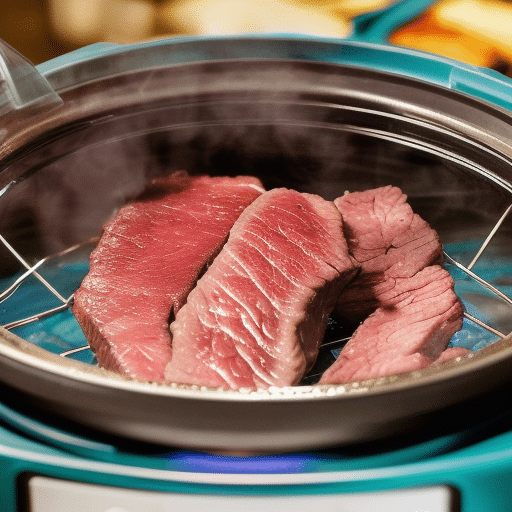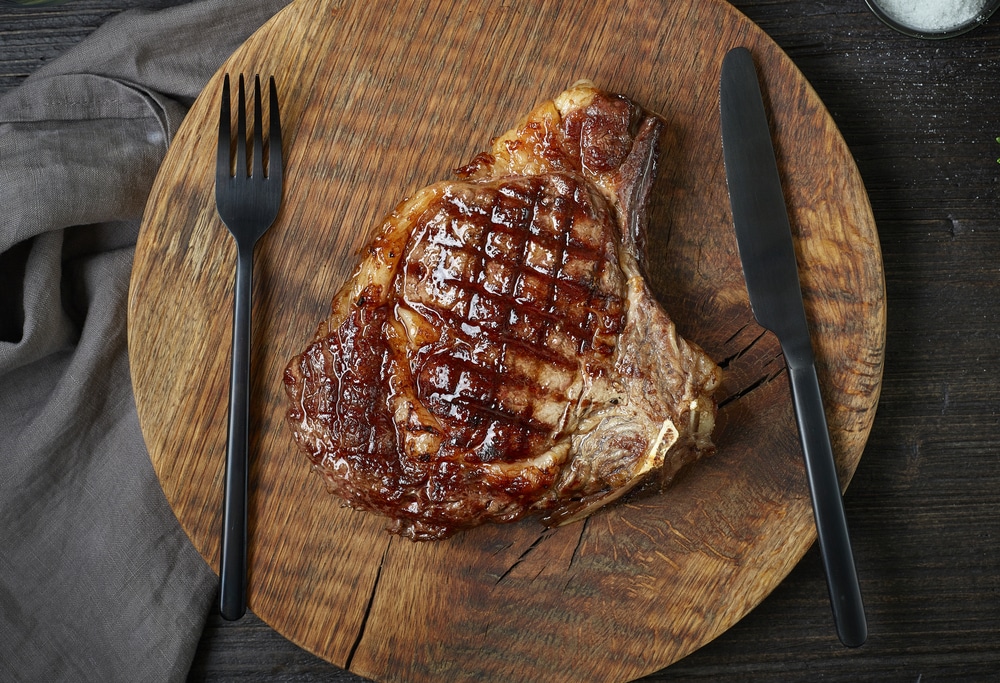Last Updated on
Learning how to cook beef in a halogen oven can be easy. Besides, it is a delicious way to prepare a meal for the whole family. But what exactly is a halogen oven? And how do you make sure your beef turns out juicy, tender and flavorful every time? In this blog post, we’ll explain all of that plus give some great serving suggestions so you can take your dish from ordinary to extraordinary. So if you’re ready to learn everything there is about cooking beef in a halogen oven – read on.
Table of Contents:
- What is a Halogen Oven?
- Preparing the Beef
- Cooking the Beef
- Serving Suggestions
- FAQs in Relation to How to Cook Beef in a Halogen Oven
- Conclusion
What is a Halogen Oven?
A halogen oven is a countertop convection oven that uses halogen bulbs to cook food. It works by circulating hot air around the food, allowing it to cook evenly and quickly. This makes it an ideal appliance for busy households as meals can be cooked in half the time of a traditional oven.
The benefits of using a halogen oven are numerous. Firstly, because it cooks with hot air rather than direct heat, there’s no need to preheat or wait for the temperature to rise before cooking – you just turn on the switch and start cooking. Secondly, since it circulates hot air around your food while cooking, you don’t have to worry about flipping or turning your food over during the process – making sure all sides get cooked evenly without any extra effort from you. Lastly, its size means that even if you live in a small apartment or home with limited kitchen space; this appliance won’t take up too much room on your countertop either.
A halogen oven is a great way to cook beef quickly and easily. Next, let’s take a look at how to prepare beef for cooking in this versatile kitchen appliance.
Preparing the Beef
When preparing beef for cooking in a halogen oven, it is important to start with the right cut of meat. Choose lean cuts such as sirloin or tenderloin, which are lower in fat and will cook quickly and evenly. Trim any excess fat from the outside of the meat before seasoning it. This helps reduce shrinkage during cooking and ensures that your meal is not greasy or fatty.
Seasoning can be done using salt, pepper, herbs, spices or even marinades. For an extra flavour, boost try rubbing a mixture of garlic powder, onion powder and paprika into the beef before cooking. If you have time to spare you could also consider marinating your beef overnight for added flavour – just make sure to use an acidic ingredient like lemon juice or vinegar so that the acidity breaks down some of the tougher fibres in the meat making it more tender when cooked.
If you’re looking for something a little different, then why not try adding some Worcestershire sauce to your marinade? It adds depth of flavour while helping keep your beef juicy during cooking – perfect if you’re planning on serving up steaks. Once seasoned and/or marinated, place your prepared beef onto a baking tray ready for placing inside your halogen oven; now all that’s left is to decide how long to cook it for.
Once you have prepped the beef, it’s time to get cooking. Follow the steps in this guide to learn how to cook your beef perfectly in a halogen oven.
Cooking the Beef

The key to success lies in understanding the temperature settings and cooking times for different cuts of meat.
For steaks, preheat your halogen oven to 230°C (450°F). Place the steak on a rack over a baking tray with some oil or butter brushed onto it. Cook each side for 4 minutes before flipping it over and cooking for another 3-4 minutes, depending on how well done you like your steak. For medium rare, remove from the oven after 7 minutes of total cooking time; 8 minutes will give you medium; 9 minutes will be more towards well done. Let rest for 5-10 mins before serving so that all the juices are locked in.
If you’re looking to cook roasts, set your halogen oven at 200°C (400°F) and place the roast directly into the base of your oven without any additional fat or liquid added – this helps create a crispy outer layer while keeping all those lovely juices inside. Roast times vary depending on size but as a general rule allow 20 mins per 500g/1lb plus an extra 10 mins if you want it cooked through properly – use a meat thermometer inserted into the thickest part of the roast to check internal temperature has reached 75 °C (165 °F). Once ready let rest covered with foil for 10-15mins before carving up.
Finally, if burgers are what you’re after then preheat your halogen oven again at 230°C (450°F) and brush some oil onto both sides of burger patties before placing them onto a greased baking tray. Cook each side for around 4-5 mins until they reach an internal temperature of 71 °C (160 °F). Serve straight away with whatever condiments that you like.
Cooking the beef in a halogen oven is an easy and delicious way to prepare it. Now that you know how to cook it, let’s explore some great serving suggestions for your dish.
Serving Suggestions
When serving beef, it is important to choose the right side dishes that will complement the flavour of the cooked meat. Some classic sides that pair well with beef are roasted potatoes, steamed vegetables, and a light salad.
Roasted Potatoes:
Roasting potatoes in olive oil and herbs gives them a crispy texture on the outside while keeping them soft and fluffy on the inside. Try adding garlic powder, rosemary, thyme or oregano for an extra flavour boost. Serve alongside your cooked beef for a delicious meal.
Steamed Vegetables:

Steaming vegetables help to retain their nutrients while still providing plenty of flavours. Broccoli florets are especially good when steamed as they become tender but still have some crunchiness left in them. Carrots can also be steamed until they reach desired tenderness – just make sure not to overcook them. Serve these tasty veggies alongside your cooked beef for a balanced meal.
A light salad is always a great addition to any main course dish like beef. Try combining lettuce leaves with tomatoes, cucumbers and onions for added crunchiness and colour contrast – add some feta cheese crumbles or olives if you’d like something more indulgent. Drizzle over some balsamic vinaigrette dressing before serving with your cooked beef dish for an unbeatable combination of flavours.
FAQs in Relation to How to Cook Beef in a Halogen Oven
How do you cook beef in a halogen?
Start by preheating the oven to the desired temperature (usually between 180-200°C). Place your beef on a roasting rack, season with salt and pepper, and then place it inside the halogen oven. Cook for 15 minutes per 500g of meat, or until it reaches an internal temperature of 75°C. Once cooked, let rest for 10 minutes before serving. For best results, use lean cuts of beef such as sirloin steak or fillet mignon.
Can you use roasting bags in a halogen oven?
Yes, roasting bags can be used in a halogen oven. However, it is important to ensure that the bag you use is suitable for use with a halogen oven and not just any regular roasting bag. It is also important to check the manufacturer’s instructions before using a roasting bag in your halogen oven as some may require additional steps such as piercing holes in the bag or pre-heating the oven first. Taking these precautions will help ensure safe and successful cooking results when using a roasting bag in your halogen oven.
Conclusion
With just a few simple steps, you can have your favourite cut of beef cooked to perfection without the hassle of using traditional methods. Whether you’re looking for something quick and tasty or want to impress dinner guests with your culinary skills, cooking beef in a halogen oven is sure to be a hit. So why not try learning how to cook beef in a halogen oven today? Who knows – you might find that “cooking beef in a halogen oven” becomes your go-to method for preparing meals.
Paul is the type of person who never met a problem he couldn’t fix. He can always be found tinkering with something in his house, even if it isn’t broken! His tips and tricks are often shared on our site. He’s the one you call when something breaks because he has been known to improvise fixes for everything from leaky faucets to malfunctioning dryers.



